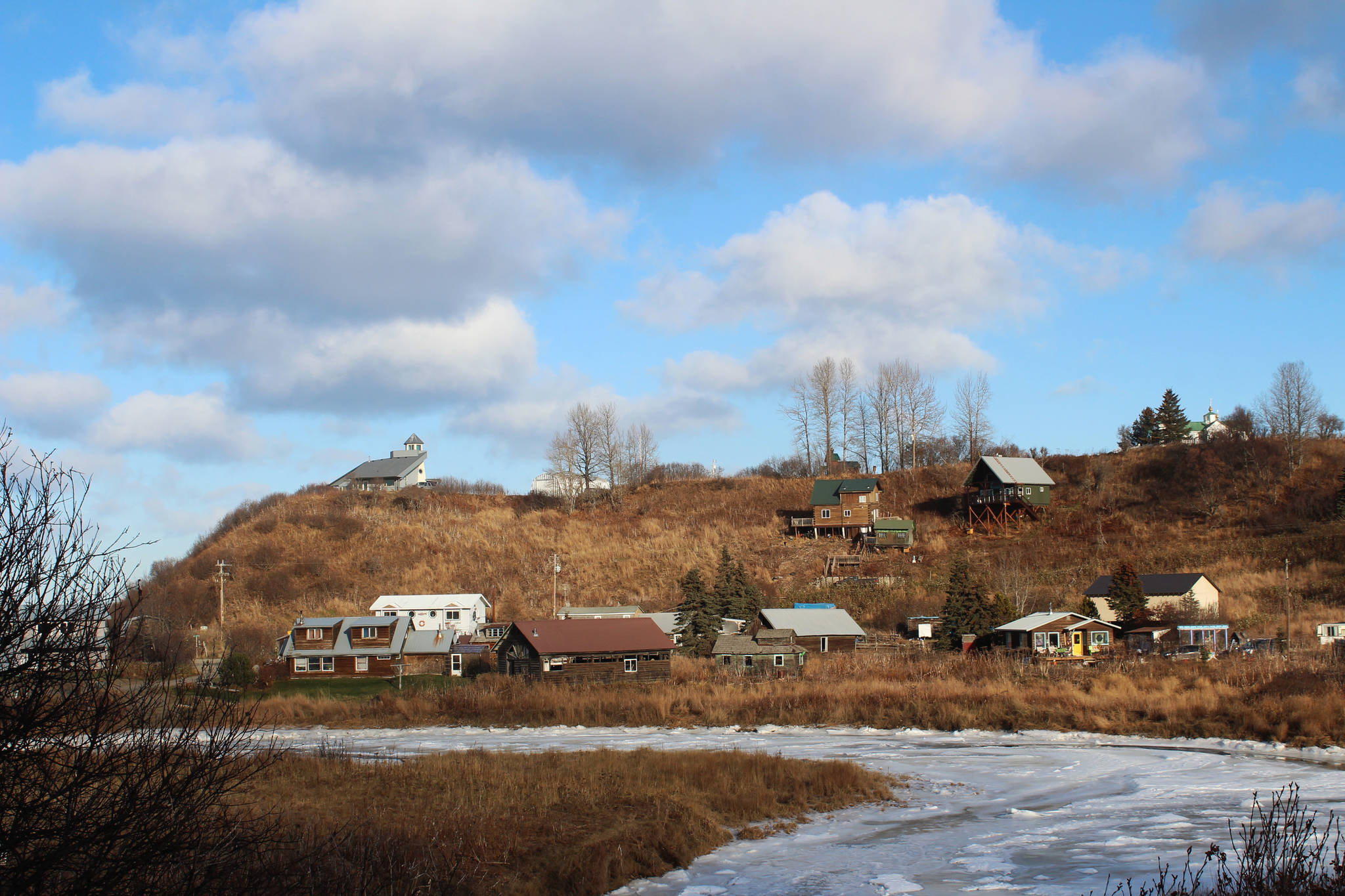As public health officials worldwide come together to move past the COVID-19 pandemic, other fields of medicine continue to evolve.
On the Kenai Peninsula, innovative addiction treatment services are being offered at the Ninilchik Traditional Council’s Community Clinic. Dr. Sarah Spencer, a board-certified addiction specialist, supervises the clinic’s medication assisted treatment (MAT) program, which the clinic has operated for the past five years.
The implementation of the new programs, Spencer said, happened “organically.” Spencer specializes specifically in addiction treatment. She said she — virtually — goes around the state to help other facilities refine their own addiction treatment services and tries to make sure the Ninilchik clinic is up-to-date with the latest best practices in addiction treatment.
As part of its MAT program, the clinic offers monthly injections of buprenorphine to people struggling with addiction. That drug is also available to patients on a daily basis, but requires weekly consultations with a physician and for prescriptions to be picked up on a weekly basis. Those extra steps, Spencer said, can make the difference between someone staying on the medication and not. In addition to providing a more manageable schedule, once-monthly injections allow service providers to check in with patients on a regular basis and see where they’re at in the recovery process.
Between her work at the clinic and her volunteer service with local syringe exchange programs, Spencer said she has been able to interact with people in need of addiction treatment services such that the program is able to respond directly to their needs. Those needs, Spencer said, do not necessarily align with how treatment for addiction has historically been offered.
“In the past, addiction treatment was very kind of punitive, like all or none, like you have to be 100% sober or 100% abstinent to be successful,” Spencer said. “I think now we understand … addiction as a chronic disease, and it’s a whole spectrum of disease, you know, from very mild to very severe and that in order to keep people engaged in treatment we have to really meet people where they’re at.”
That restructuring of approaches to addiction can be seen in the Ninilchik Community Clinic’s implementation of “low-threshold care” treatment services, which it introduced in 2018 as part of its MAT program. Spencer described low-threshold care as “meeting the patient where they’re at.”
“[Low-threshold care is] trying to make sure that no matter what door they come in, to try to get help that they’re able to get help, you know, at any point in time,” Spencer said.
A harm-reduction approach to addiction treatment, examples of low-threshold care practices implemented by the clinic include offering same-day and walk-in appointments, making a counselor available to people seeking treatment and providing transportation to services.
The Kenai Peninsula’s overdose rate has historically been one of the highest in the state, Spencer said, but she generally thinks the region is “typical.”
“We’re kind of dealing with the same addiction epidemic that everyone else is dealing with, especially in regards to opioids,” Spencer said. “Our methamphetamine use rate is definitely higher in Alaska than it is in some other areas … methamphetamines tend to be more commonly used in rural areas versus cocaine and crack in more urban areas.”
Generally, methamphetamine use and overdose has been on the rise in Alaska over the past 10 years. About one-third of new patients seeking treatment at the clinic, Spencer said, are people who have comorbid opioid and methamphetamine use disorders.
Those patients are at high risk for overdose death but also have historically high rates of treatment drop out. Following the implementation of low-threshold services, however, the Ninilchik clinic saw that patients’ average stay in treatment increased from two months to six months.
However, Spencer said that six months is generally regarded as the lower end of how long they want people to stay in treatment.
“Ideally, we want them to stay in treatment for years, but that’s one of the quality measures when we look at retention and treatment for opioid use disorders,” Spencer said. “At the minimum, we want to try to get most of our patients to stay in for at least six months, as kind of a basic starting point.”
Spencer submitted the clinic’s data to the American Society of Addiction and Medicine, which offered the clinic the opportunity to present its findings at the conference in April. That opportunity is offered to fewer than 100 programs nationwide each year.
In presenting at the conference, Spencer said she hopes to provide new insight into how innovative addition treatment services are being implemented in rural communities. On the peninsula, for example, receiving a monthly dose of buprenorphine allows commercial fishers to spend extended periods of time at sea without being at high risk for relapse.
“A lot of low-threshold care programs are based in big cities, like they have street outreach where they go drive a bus around and [administer] medicine on the street, or do it directly at syringe exchange programs, or [at] walk-in clinics by major hospitals,” Spencer said. “But there’s very little research, or information on those low-threshold programs that are rural areas and not in urban areas.”
Addiction treatment service providers from around the peninsula will come together to discuss what services they provide during a summit-esque meeting on April 22 in Homer.
“We’re going to try to get all the different treatment providers, whether it’s medical or behavioral health or other social services stuff, to all come together and [have] everyone take a few minutes to talk about what services their organization provides,” Spencer said. “A lot of people just don’t know what’s available.”
Reach reporter Ashlyn O’Hara at ashlyn.ohara@peninsulaclarion.com.

